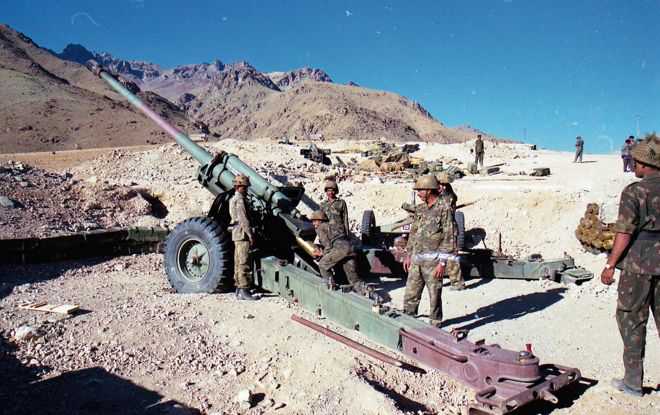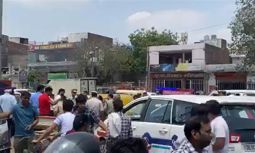
Backbone: The measure of our preparedness continues to be the valour and unflinching loyalty of our soldiers.
Pravin Sawhney
Strategic affairs expert
As India celebrates 20 years of the Kargil conflict with stories of valour, it should have the courage to face the truth: The Army’s top leadership was unprepared. Fixated as it was on counter-terror operations, India paid a heavy price for what was a pyrrhic victory.
While first intrusions were detected on May 6, 1999, the GOC, 15 Corps, Lt Gen Kishan Pal, told the media on May 14 that ‘the situation was local and would be dealt with locally’. Based on this, defence minister George Fernandes declared that the infiltrators would be thrown out in 48 hours. It was clear within hours that the Army’s intelligence was inaccurate. The Pakistan army had launched a major operation with mujahideens in the vanguard.
Relying on this faulty information, the Vice-Chief of Army, Lt Gen Chandra Shekhar, believed that a cover-up was possible. He told his Chief, Gen VP Malik, who was visiting Poland, not to cut short his visit as it would raise hackles back home. Then he tried to persuade the Air Force to provide attack helicopter support, without the knowledge of the political leadership, to hit the intruders. Air Chief Marshal AY Tipnis refused, making it clear that the use of air power needed clearance as it would enlarge the conflict from a local to an all-out war.
The Army leadership was faced with two choices: either apprise the political leadership of the seriousness of the situation and insist on air support; or, treat troops like fodder in the hope that some miracle might happen. It decided on the second, primarily to avoid questions on its two-fold failure: one, it had wrongly assessed war as counter-terror operation, and two, it had no idea of the enemy’s preparations.
General Malik wrote in his book, Kargil: From Surprise to Victory, ‘I felt that the movement of additional units and sub-units at the brigade and divisional level had been done in haste. The hastily moved units and sub-units had neither adequate combat strength nor logistics support. They were being tasked at brigade and divisional levels in an ad hoc manner without any detailed planning.’ Of the official figure of 527 dead and 1,363 wounded, the maximum was during this period (May 16-26).
Once it was evident that a greater military effort would be required, the government, on May 25, allowed the use of air power with two caveats: ground and air forces were not to cross the LoC, and the area of operations must remain restricted to the Kargil sector. General Malik writes that while the N-weapons factor was not discussed by the political leadership, it must have weighed on their minds, for the Vajpayee government to issue such instructions.
The Army faced its moment of truth: it was not prepared for war. General Malik writes, ‘Besides weapons and equipment, the ammunition reserves for many important weapons were low.’ There were shortages everywhere, from transport fleet to oils, lubricants and greases, winter clothing, artillery guns, and so on. The situation was so alarming that General Malik, in reply to a media question on June 23, when operations were at a precarious juncture, conveyed his helplessness, ‘We will fight with whatever we have.’ His comments got worldwide coverage, with Vajpayee admonishing him in private that he should have restrained himself. Meanwhile, bureaucrats from the Defence Ministry were either busy ringing up friendly nations (Russia and Israel) to despatch spares and ammunition or were themselves on flights to buy the items.
In this crucial period, Army units ordered to evict the intruders suffered heavy casualties, and after the conflict, 48 officers and all ranks from these units faced a court of inquiry on charges ranging from command failure to cowardice to desertion.
While the IAF and the Navy were placed on high alert, the Army’s dilemma was how to balance its forces: a capability asymmetry vis-à-vis Pakistan was required in the limited conflict theatre concurrently as a strong defensive posture had to be adopted on the entire western front to discourage Pakistan from enlarging the conflict. General Malik gambled. He moved a preponderance of artillery (firepower), which is the mainstay of any operation, from other formations, including strike corps to Kargil. He also moved additional troops, thereby denuding capabilities of other critical theatres which became vulnerable in case Pakistan launched an all-out war. According to him, ‘nearly 50 fire units (900 guns) comprising artillery guns, howitzers, mortars and one rocket battery were employed in the area of operations’. All 100 Bofors guns were brought to Kargil.
The tide turned with two events. NSA Brajesh Mishra met his US counterpart, Sandy Berger, in Europe on June 16 and told him that it would be difficult to leash Indian military for long. Dreading N-conflagration, the US despatched a powerful team to meet PM Nawaz Sharif, with advice to withdraw his troops. Sharif panicked and met President Bill Clinton in Washington on July 4. Sharif agreed to withdraw troops. The other event was that, unknown to India at that time, Musharraf too was not prepared for war.
In the aftermath, the Army’s 8 Mountain Division was told to hold the Kargil sector at altitudes above 12,000 ft throughout the year. Even though Musharraf failed to make territorial gains, he managed to raise the burden of our Army by forcing its troops to hold an additional 120 km of the LoC.
The singular important lesson was: Since the Pakistan army, which controls its nation’s terms for peace and war, has enormous potential to spring surprises and our military should be prepared to fight and win a conventional war. It, however, appears that this lesson remains unlearned. As it was in 1999, the measure of our preparedness continues to be the valour and unflinching loyalty of our soldiers. And we are prepared to let them down again.



























